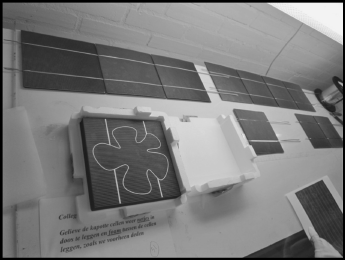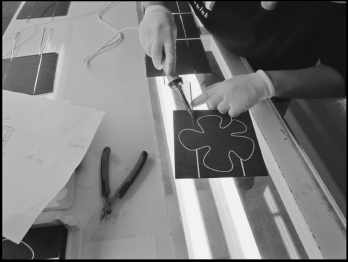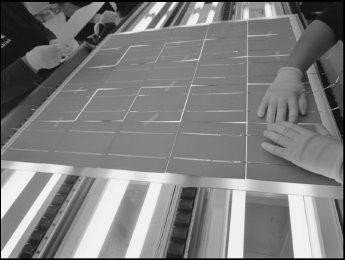C.5 Prototyping
The definitive concept was detailed. A render visualized the solar cell, but it was not physical. Additionally, the performance of the solar cell cannot be tested. A functioning prototype was the solution to enable the evaluation of the product.
The University of Stuttgart offered to order the screen and screen print the new designed cells. The University of Twente generously provided a budget for the prototyping. Solland Solar agreed to offer 200 solar cells for the prototyping. This allowed for a greater number of functioning flower cells. The screen and solar cells were delivered to Stuttgart, and the University of Stuttgart produced the solar cells.
After testing the redesigned solar cells, the cells were sent to Ubbink. Ubbink made three functioning PV modules with these cells in combination with H cells. Figures C.5.1, C.5.2 and C.5.3 depict several production steps. Figure C.5.4 shows two of the three PV modules.
Figure C.5.1 Flower cells at Ubbink BV (courtesy of P. de Boer)

Figure C.5.2 Soldering tabs on a flower cell (courtesy of P. de Boer)

Figure C.5.3 PV module production (courtesy of P. de Boer)

Figure C.5.4 Final PV modules (courtesy of E. Pupupin) ...
Get The Power of Design: Product Innovation in Sustainable Energy Technologies now with the O’Reilly learning platform.
O’Reilly members experience books, live events, courses curated by job role, and more from O’Reilly and nearly 200 top publishers.

